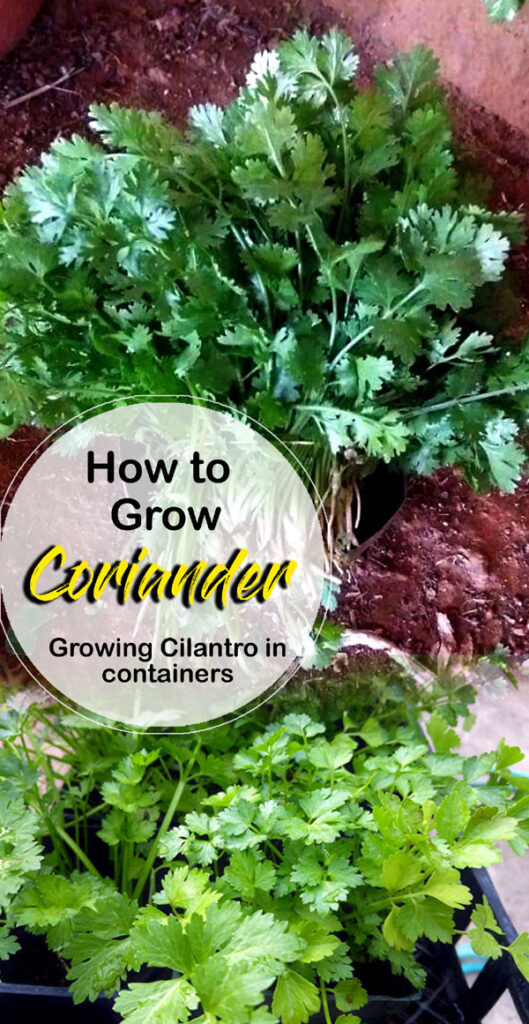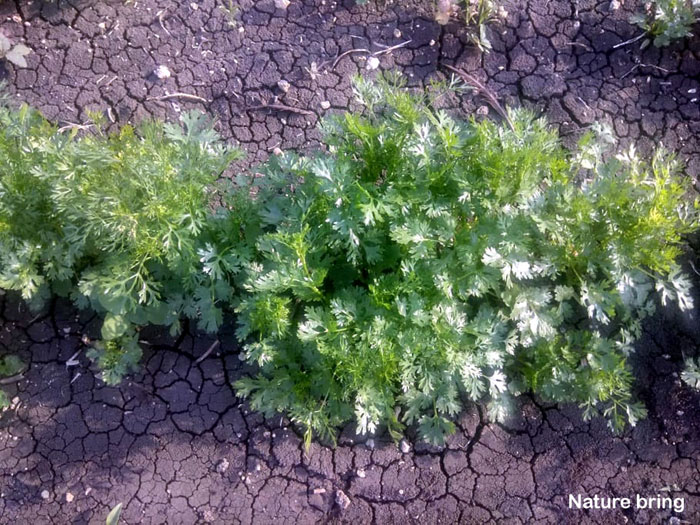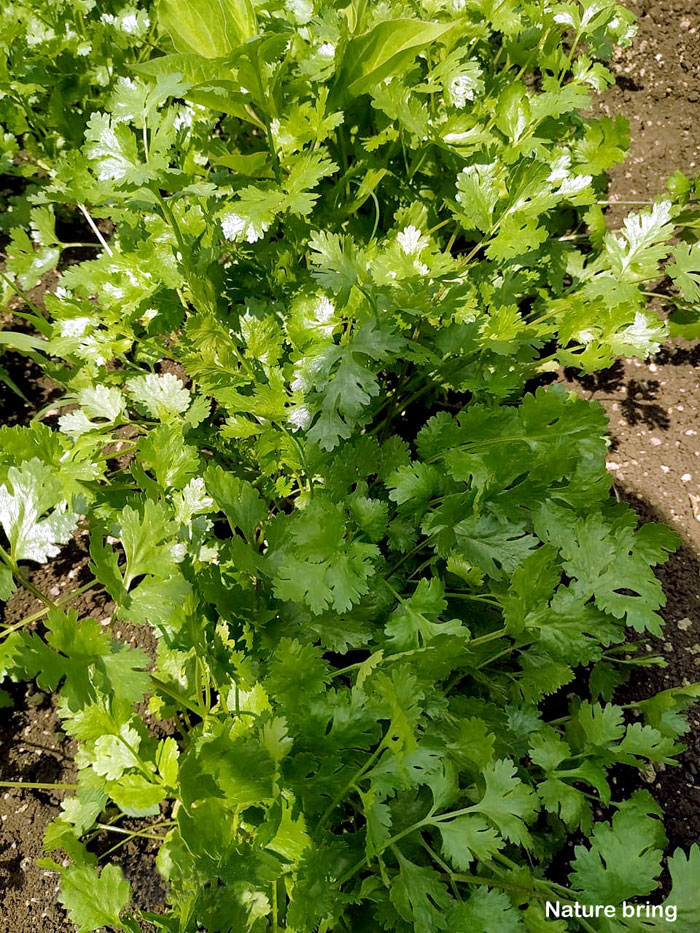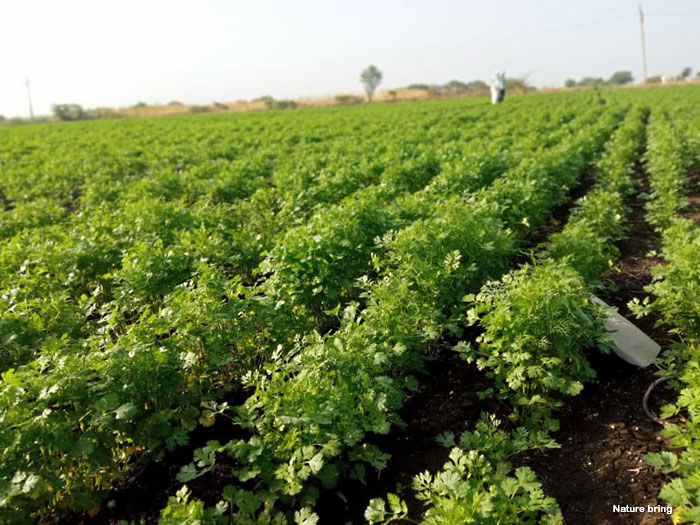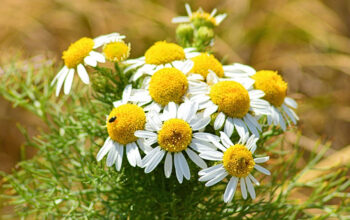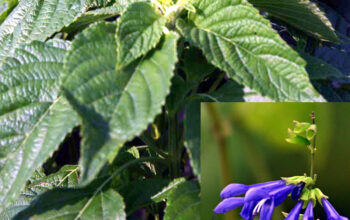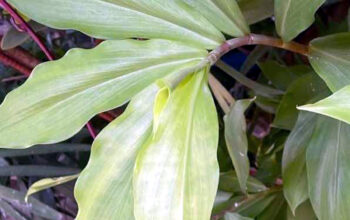Coriander and Cilantro
Cilantro, also known as coriander or Chinese parsley, can be used in Indian, Chinese, and Thai cuisine. Both the fresh leaves and seeds of coriander offer distinct flavors; the seeds are used as spices, while the leaves can be slightly bitter and make a great garnish. It’s easy to grow coriander in your country yard or terrace, and if space is limited, you can plant cilantro in pots and keep it in a sunny window. Late spring to autumn is the best time for coriander cultivation.
Green coriander, also known as Dhania in India and Cilantro in the West, is a staple in Asian cuisine, where its leaves and seeds are used to add flavor to a variety of dishes.
Overview Cilantro
Scientific name Coriandrum sativum
Common name Coriander, Cilantro, Chinese parsley
Plants type Herb
Sun Full Sun, part Sun
Soil Loamy, well-drained fertile soil
Soil pH 6.5-7.5
USDA Zone 3-11
Growing Coriander in your garden
Soil and location
Coriander thrives in well-drained and fertile soil, but if your soil is heavy, improve it with garden compost or well-rotted cow dung manure, and remove any large lumps or stones. Cilantro prefers full sun but needs a little shade during hot noontime, and its seeds mature quickly in hot weather, which is vital for its diverse leaf varieties.
Coriander Planting
For continuous coriander supply from late spring to autumn, remember to prune every 3 weeks. You can sow the seeds directly into the ground instead of using separate trays.
Spacing
Coriander seeds can sow well in groups of 5. The space between the rows can be 20 centimeters and the distance between plants is 20 centimeters.
Watering
Coriander plants thrive in moist soil, so it’s important to regularly keep the soil damp without making it soggy, as they have deep roots and require good drainage. Avoid over-moistening the soil and aim to provide about 1-inch depth of water per week to ensure that the plants stay healthy.
Humidity
Cilantro grows very easily, especially in warm weather. You will extend the harvest time when the temperature is around 70°F.
Fertilizer
For optimal production, apply liquid fertilizer to the coriander once a month and use organic manure for organic results.
What is the difference between Coriander and Cilantro?
Coriander and Cilantro are different parts of the same plant. Cilantro refers to the leaves of the plant, which are used in the form of herbs, while coriander is sown for seed, It is usually sown in the ground and used as a spice.
How to grow Cilantro in pots
- Select a pot that is at least 18 inches wide and 10 inches deep for planting Cilantro.
- Fill it with well-drained, nutrient-rich soil mixed with organic fertilizers or compost, and lightly water the soil.
- Sprinkle the seeds over them, cover them lightly, and place the pot in a sunny location or on a sunny window-sill after planting the seeds.
- The seeds will sprout in 7-15 days. Maintain consistent soil moisture and lightly mist the plants with a spray bottle.
- Avoid watering directly onto the soil to prevent displacing the seeds.
- When the Cilantro reaches a length of 4-6 inches, it’s ready for harvesting. Harvest 2/3 of the leaves from the plant each week to encourage continued growth, and by doing so, you can harvest four times from one pot.
Pests and diseases
Coriander and cilantro are troubled by some common diseases and pests, although they can be controlled appropriately. Bacterial Leaf Spot, Soft Rot, Dumping-Off, and Powdery Mildew are some common diseases that affect it. Avoid overhead irrigation, and add water early in the morning, so that the plant dries well, this will reduce the chances of disease.
Aphids, Armyworms, Cutworms, Root-knot nematodes, etc are common insects. In case of minor infestations, cut off the infected area or take additional management measures. Apply pesticides to reduce nematodes.
Read also:
Growing caring and planting rutabaga plants. How to grow lupin. How to fertilize your roses. 12 Best plants to grow from cuttings. Growing Cinnamon in containers. Organic Sage growing in containers. Herbs to start indoors. Bay laurel growing and planting tips. 10 root vegetables easy to grow. 09 leaf plants to grow in containers.
For pin:
